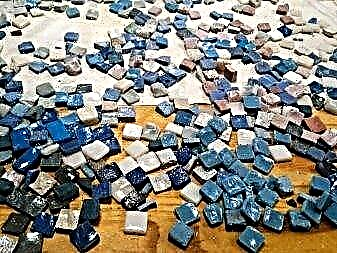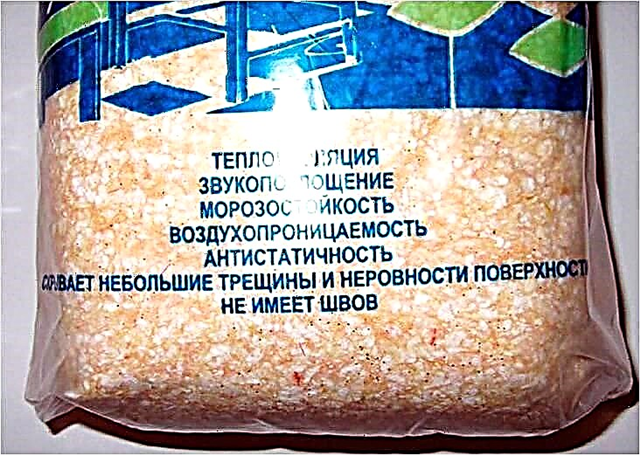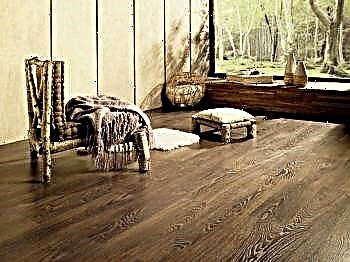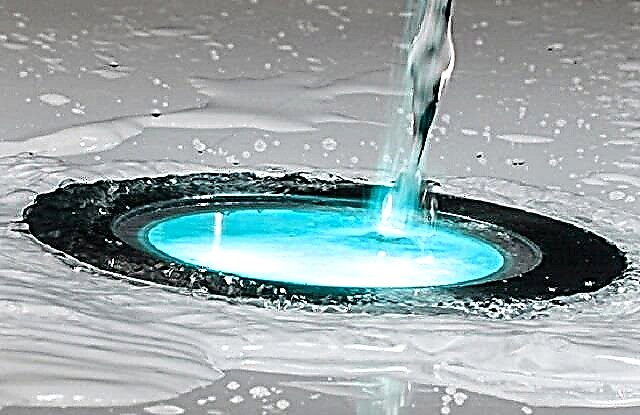Katya Figaro Sun, 19 Nov 2017 08:01:22 +0300
Most of us know only the most basic things about mosaics, the main of which is beautiful. However, to understand how to use the mosaic in the interior and how to use it to create a different decorative effect, you need a professional. For this we invited an interior designer Galina Berezkin.
Projects ALL
- Mosaic is one of the oldest types of decorative design of space. Due to the wide variety of methods of application and the colossal palette of shades, shapes and textures, mosaic does not lose its relevance and invariably remains a fashionable way of expressively decorating a modern interior. I offer some interesting ideas and tips for using mosaics.
1. Lines and stripes
The rhythmic composition of the mosaic lines of several shades allows you to transform any space and creates the effect of extra depth. Picturesque mosaic stripes of different widths are a convenient way to assemble your own unique interior palette. Softer in visual perception option - wavy stripes of several shades.



2. Geometric ornament
Strict, graphic ornament can quite easily be embodied in a mosaic design. This technique will be a spectacular and unusual solution and enrich the visual image of any interior.
Using mosaic
This material has good moisture and wear characteristics. They are most comfortable facing an uneven, curved surface. Mosaic can be laid together with ceramic tiles, changing the width and length in the places of decoration, while not cutting the tiles.

Chocolate mosaic in the interior of a modern kitchen
With the help of mosaics, you can give the room luxury, originality, originality.
You can make a colored wall in the house or use this material to decorate furniture, columns. Mosaic can be used for decoration of tables, bar, arches, etc.

Very bright design for your bathroom
Mosaic is an expensive but effective choice. It is enough to select with its help several elements in the house to make an interesting touch.
It can be used in combination with other materials. You can select zones in the room with its help or make emphasis in some areas.

Using a mosaic, you can focus on a specific area
Mosaic can be used in any room:

Mosaic can be used to decorate not only the kitchen
Bathroom
Mosaic tiles can be combined with tiles. With its help, you can lay out the panel. They decorate the walls in one color or make a smooth transition between shades.

Create an effect using mirror inserts
This material is used not only for decorating walls, but also for floors. Lay out patterns, paintings, paths that bring liveliness to the interior.
Bedroom, living room
Mosaic will look good in the bedroom, living room, if they are decorated in vintage, retro style. To emphasize the peculiarity of the Moroccan or ethnic style, panels are made on the wall.
Mosaic may also be present in contemporary styles. The main thing is that one rule is observed - the combination of color.

Most often, tiles cover a section of the wall or a single wall of a bedroom
The material is used to decorate furniture. So, you can update the old coffee table, making its surface colored, window sill.

Resistant to mechanical damage, moisture

We revive the interior of any room
Kitchen
In the kitchen, you can replace the usual mosaic tiles, this is suitable for any design. Bright colors and your mood will appear in the kitchen.
An apron in the kitchen can be made of the same color. It looks interesting when bright splashes are scattered on the wall, while it is allowed to use several shades at once. This material may be concave or even.

An apron in the kitchen can be made in one color.
If the house has a fireplace, then the mosaic can be used to highlight and decorate this zone. You can choose mosaic tiles of the same color with the rest of the room, or make a pattern in this area, multi-colored blotches.
For the use of such tiles, a garden, outdoor gazebo, veranda are suitable. In these places, you can add interesting patterns, arrange a path on the site, update garden furniture. If there is a small fountain, a well or a pond in the courtyard, you can lay out a mosaic in some places in these zones.
A kind of mosaic
There are many types of mosaic tiles. They differ in material, colors, useful life, and other characteristics. Having a large selection allows you to use this material in any room (rooms, bathroom, kitchen or hallway).

Thanks to the presence of many shades using the mosaic, you can create almost any pattern
Types of mosaics:
- metal
- glass
- Moroccan
- smalt,
- stone
- ceramic
- wooden
- mirror
- Coconut

Mosaic is a pretty old way of decorating.
Metal
A relatively new type of tile. This tile is made of stainless steel. Its thickness is small, but has good strength, light weight. Damage to such a tile is not terrible. It is resistant to corrosion, therefore, it can be used in places with high humidity, it is a kitchen and bathroom.

Corrosion resistant
There is also an aluminum mosaic. This material is softer, they can easily form round surfaces. It is also moisture resistant.
Moroccan
The Morocco style involves the use of a variety of patterns, both flat and voluminous. And the mosaic can handle it easily. This style can be combined with any other, therefore, it is often used.

Using a wide variety of patterns
You can create a bright game of colors if you use different colors and textures. The main shades are mainly terracotta, brown, ocher. Against their background, these colors look good:

You can use different colors and textures.
The panel is better to assemble from small mosaic tiles. You can use the traditional motifs of the "Morocco" style or choose other patterns, plots.
Smalt
It is considered one of the most expensive, because its basis is natural glass. In good lighting, such a tile seems to glow, it has a bright and saturated color in itself. Such material will look good in any interior.

Smalt Mosaic - Heat Resistance Advantage
Even a small area decorated with smalt mosaic will stand out in the design of the room. But, due to the high cost of the material, not everyone can afford to use it.
Glass
Such a mosaic has a relatively low cost, therefore it is in demand. She has a variety of colors. There are such varieties of glass tiles:

In demand due to its price
Such original and varied shades are obtained due to the use of different layers of foil in the production.
Such material has good strength readings, it is resistant to heat and frost. It can be used in any room. Such tiles can be made out:

The main qualities of mosaic surfaces are aesthetics and practicality.
Mirror
Mirror tiles are considered one of the types of glass. It differs in that it can reflect surrounding objects and light. This quality allows you to visually expand the space. It’s more difficult to work with it, unlike the others.

Expanding Space With Mirror Surfaces
This tile does not tolerate strong moisture. From dampness, turbidity appears on the surface. Therefore, it is better not to use it in the bathroom and kitchen. In the rooms, on the contrary, it will look good, and will serve for a long time subject to the rules of operation.

This variety is very afraid of moisture
Stone
Such mosaic tiles have various options. This allows not only to tastefully design the room inside, but also to ennoble the area around the house. When decorating the walls, both expensive material and ordinary pebbles can be used. Both options look good, the difference is only in price.

Mosaics and panels made of natural stone are most often made of marble, onyx, lapis lazuli
Coconut
For the manufacture of such mosaic tiles, natural material is taken. It has an original appearance, good strength. Also, it is resistant to damage, the effects of fungus, moisture. Therefore, this tile can be used both in rooms and in the bathroom, in the kitchen.
For coconut mosaic tiles, you can use simple parquet glue. This material is easy to wash, it retains heat well and protects against extraneous noise. Coconut tile is resistant to burning.

Flame retardant
Ceramic
Such a mosaic tile resembles an outwardly ordinary ceramic tile. They will differ only in shape and size. It can be square, rectangular. Mosaic can be made using some effects. For example, imperfections are imitated, small cracks, there are intersperses of various bright shades, resort to glazing. Unglazed tiles will have a porous surface.

Mosaic will lie even on an uneven surface
Ceramic mosaics can be used in the exterior of the house and interior.
Wooden
Wooden mosaic fits well in the style of techno, loft. Outwardly, it looks very unusual and original.

Original fit into any style
Such a mosaic is mainly a mixture of wood species and different shades. It can be of unusual shape, for example, in the form of a cross section of a tree trunk.



Rare species
Rare and expensive species include diamond, gold, pearl mosaic. Tiles made of such material are likely to be handicrafts. Working with her is very painstaking and requires an accurate approach.
The mother of pearl is fragile, it cannot be laid on the floor, but it is waterproof and is not afraid of high temperatures, moisture.
Elite is considered a tile from jasper, lapis lazuli, onyx. Walls using such tiles will look luxurious. Onyx has a large selection of shades. Various patterns that, due to the glow effect, look special. The color of such tiles is blue, yellow, orange, pink, amber, etc.
Output
Mosaic in the house can be considered an indicator of well-being, affluence. For its manufacture, expensive natural materials are used. But this is not available to all consumers. And to satisfy all customers, manufacturers have developed analogues that mimic natural materials. They also have high quality characteristics. Therefore, everyone can decorate their home with mosaics.
PHOTO GALLERY (more than 180 photos)
This is really a spectacular decor that has no borders and barriers. The mosaic is strong, durable and water resistant. Find out what options you can use. After reviewing the information, please leave your comments with reasoning in the comments. They will be useful to other readers. Your opinion is very important to us. Thank you for your participation. We appreciate your every feedback and time spent.
Material Features
Mosaic - a coating that has been successfully used for decoration of various rooms and surfaces. Such tiles are found in the design of bathrooms and kitchens. Widely used for decorating living rooms, wall and floor decor. When talking about mosaics for interior decoration, they mean small details of glass, smalt, glazed ceramics, stone and other materials, the so-called tessers.


From the mosaic tile, you can make an apron convenient for use for the workshop's working area, lay out a fireplace or decorative columns with it. Mosaic patterns are also appropriate in the bedroom, they can successfully decorate the head of the bed. Mirrored mosaic inserts look good in the decor of the living room. By the way, elements from acrylic are produced on an adhesive basis, so it is not necessary to fix them on glue.

Mosaic floors also look spectacular. They are completely made of decorative mosaics, and can alternate with ordinary tiles to achieve maximum aesthetic effect.
The material is selected taking into account the purpose, type and type of interior.
For various rooms, a certain type of mosaic is intended:
- Ceramic. Appeared earlier than others, its properties are close to ceramic tiles. It is characterized by a variety of textures and colors. Details are available in two types: glossy and matte.

- Stone. It is applied to a decor of floors. It is made from tuff, marble, travertine, occasionally from jasper, granite. Conceived shapes and sizes are given to mosaic elements by careful grinding.
- From smalt. Represents pieces, blocks and plates of opaque colored glass. This material is distinguished by its extraordinary strength and reliability. It has a variety of shades, as various ingredients are added to smalt. Often used for the manufacture of decorative panels.


- Mosaic from glass It is made of multi-colored, dull and transparent, has a wide range of colors. Thanks to processing using innovative technologies, it has high strength and wear resistance. The most common and famous mosaic is from Venetian glass.
- Metal. More often made of steel or brass plates on a rubber or plastic base. Such material has a bronze, golden, silver tint. It can be used for finishing floors and walls.


In addition to these species, there are also wooden, porcelain and other varieties of decorative mosaics.
PVC panels
The classic mosaic elements, which require a laborious process of manual laying out, have been replaced by new materials. These are tape tapes placed on a grid. They are conveniently attached to the surface in a monolithic piece. Unfortunately, this is expensive stuff.
There are budget options for mosaic tiles. These are sheets of polyvinyl chloride, decorated under a mosaic. Such sheets are glued to the base using special solutions. Joints with ceiling and floor are covered with decorative panels.


The advantage of this material is that it is not necessary to wipe the seams during operation, it is waterproof. In addition, its prices are quite affordable. That is why on sale today there are many options for mosaics made of polyvinyl chloride.
Such a mosaic has minor drawbacks: it can be used exclusively on flat surfaces, since even with a slight curvature the elements are poorly attached and look unnatural.

Mosaic plaster
Another effective material for the design of modern interiors is mosaic plaster. In addition to an impressive variety of textures and colors, it is durable and reasonably priced. Often used for zoning indoor spaces.
Plaster mosaic is available in several types. They differ in basic characteristics:
- type of filler
- method for coloring particles
- particle size.


The most common component of a stucco filler is marble; occasionally granite or quartz chips are added to it.
By the size of the constituent particles, mosaic plaster is divided into the following types:
- with a fine texture
- with a large texture,
- with an average texture
- with fine texture.


Before purchasing, it is recommended to thoroughly study the indicators of the mixture indicated by the manufacturer on the package.
It has mosaic plaster and its drawbacks. There is the possibility of corrosion when processing a metal base. Therefore, when working with metal, preliminary priming and the choice of a water-based solution are necessary. It is possible to process with such plaster only whole, undamaged surfaces. For cleaning plaster and any other mosaic, it is recommended to use special means for washing.
Varieties of mosaics
Mosaic in the interior is classified into the following types:
- glass (one of the most popular types, characterized by low cost and diverse performance, among which there are matte, gold, transparent, platinum, silver shades with additional decorations and without them). It is possible to create original colors using the appropriate layers of foil. This type of mosaic is resistant to the environment, high humidity, high temperatures, aggressive detergents. It differs from other types of mosaics by frost resistance, strength, heat resistance. Suitable for decorating the kitchen, bathroom, fireplace, countertops, floors, partitions.



Photo: a combination of the color of dishes and a work apron



Photo: glass mosaic worktop
Tip: when acquiring glass mosaic as a floor covering, pay attention to the slip coefficient. To avoid slipping on the floor, select mosaic tiles with a minimum slip coefficient. For bathrooms and bathrooms, purchase a mosaic with a maximum slip coefficient, because in these rooms there is a chance of a wet floor.
- ceramic (produced according to two technologies: like ceramic tiles and cut porcelain tiles). The main task in the decoration of ornaments is the gradual alternation of matte-gloss areas of various colors. The features of this type of tile are increased strength and resistance to water. This makes it possible to use mosaics in the form of decorative accents and panels in the interiors of various rooms.


- stone (elite type of mosaic). It has several varieties: from lapis lazuli, jasper, marble, travertine. You can decorate this type of mosaic: stairs, countertops, swimming pools, walls of the kitchen, bathroom, bathroom, hallway, floor in the lobby. Often used for finishing steps, decorating entrances, door and window openings, facades.


- smalt mosaic (the most expensive type, but at the same time, high-quality and practical). In appearance, the smalt mosaic in the interior looks like smooth glass. The color palette is saturated, bright. Shades of mosaics have a glow effect. Such a mosaic is suitable for decor of interior surfaces, including frequently loaded places.

Photo: smalt mosaic
- metal mosaic (popular in wall decor). It is made in brass and stainless forms attached to a base made of plastic. It has a different surface. Used as decorating inserts. Mosaic tiles have a different shape: oval, rhombic, rectangular, square.


Photo: finishing a working apron with metal mosaic
Sizes of a mosaic and ways of its laying
Mosaic is produced in the form of individual fragments of various shapes and sizes. This is an important detail in the decoration. To lay out the mosaic in a quality manner, it is better to assemble it into the necessary matrices.
Inside, mosaic tiles are attached to each other to a grid or a special film. On the shelves of supermarkets you can find ready-made matrices and panels. In online stores you can order mosaic compositions for interiors according to the photo of the desired designs.
Stacked mosaic butt. Fastens with special adhesive bases and pastes for grouting joints. The popularity of mosaics does not go out of fashion, since the beauty of its coating, resistance to external influences, and durability make it indispensable in places where there are bumps, drops, and ends of surfaces.
In the kitchen, it is better to use a mosaic of ceramic matte shades or tile mosaics. It is possible both joint and separate combination of several types of mosaics, creating an original attractive interior.
The mosaic finish is ideal for large, spacious kitchen areas. It can be used as a working material for a wall, worktop countertops, as well as decorating details. For miniature rooms, creating bright accents on the working surface of the wall is suitable. The variety of color palette is far from the limit.
Tip: multi-colored mosaic is perfect for spectacular decoration with furniture patterns, such as the backs of chairs in the living room, cabinets, the surface of shelves, coasters in the kitchen.
When deciding whether to make a mosaic in a house or not, pay attention to its cost, which is determined depending on the naturalness of the materials, their quality, quantity, special coating.
Once you decide to lay out the mosaic yourself, you can successfully save on hiring finishing specialists, performing the work itself, and materials for repairs. Otherwise, arranging an apartment will be expensive, especially if you hire professionals.


Photo: mosaic decoration of furniture

Unconventional mosaic decoration in the interior
Porcelain is considered a non-standard type of finish. This is an inexpensive material that is much stronger than ceramic.
Also in the interiors, multi-colored mosaic glass and aventurine pieces are used. They are recommended to be used for the decor of the plinth, tabletop, window sill.
The main feature of sheet mosaic is the difference in materials for its manufacture. The sheet mosaic in the interior is somewhat similar to the well-known tile, but it looks different. Fastens to a mesh basis, is easily cut, processed, laid out.


Photo: sequence of laying sheet mosaic
The most expensive diamond mosaic. Diamond pieces are used as a stylish, refined, original decoration in the design.
With the help of diamond finishes, it is possible to create stunning decorative elements. Kits of this type of mosaic contain a detailed laying layout with step-by-step photos, glue base, decorating rhinestones, grout paste, tweezers, fragments of the mosaic packed in separate bags.
The entire process of laying out the mosaic, despite the difficulty of joining, will not take much time. The only thing that is required from the owners is patience, perseverance, caution and accuracy.
It is enough to slowly “plant” fragments of the mosaic onto the glue in a checkerboard pattern or in a row. In addition to the sparkling interior, the design is distinguished by creativity, creativity, elegance. Mosaic home decoration can subsequently become a hobby for creative individuals or their professional activities.



